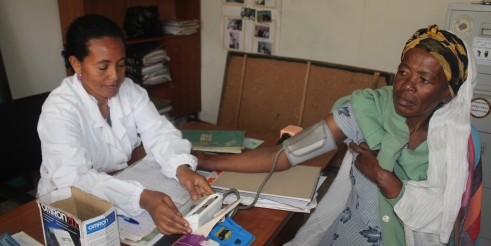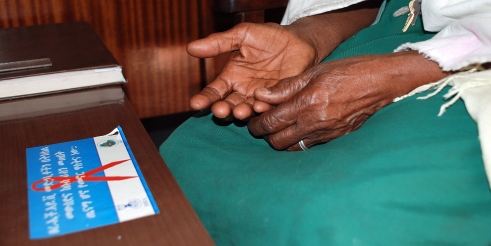
(c) Judith Escribano/Age International
HIV-positive older woman at a day centre and health provider in Addis Ababa, Ethiopia
By Ben Small
As access to anti-retroviral treatment (ART) grows, the population living with HIV is rapidly ageing, yet care services are ill-equipped for older people.
Nearly 16 million people across the globe have access to ART, according to UNAIDS, which is double the figure in 2010. New HIV infections have also reduced 35% since 2000 and AIDS-related deaths have fallen 42% following its peak in 2004. On World AIDS Day, these numbers are a huge cause for celebration.
However, with more people living longer with HIV, there are more and more people aged over 50 who have the condition – growing from 3.6 million to 5.5 million in the last three years. HIV is fast becoming a chronic condition and services are not keeping up.
“HIV services are still not equipped to address the needs of older people and need to be more integrated in care systems for other chronic diseases,” said Rachel Albone, Health and Care Policy Advisor at HelpAge International.
“Alongside care and treatment, prevention is also key, as demonstrated by the 120,000 people aged 50 and over who become newly infected with HIV each year.
“What is needed now are clear strategies to target older people with appropriate services, supported by an enabling national policy environment, specific commitments, targets and budgets.”

(c) Jeff Williams/HelpAge International
Older woman in Ethiopia receiving HIV peer education
She recommends adopting an approach that combines the UNAIDS strategy of focusing on HIV services with goal 3 of the Sustainable Development Goals. This encompassing objective aims to “deliver healthy lives and promote wellbeing for all at all ages”, and sits comfortably alongside UNAIDS’ vision of “getting to zero”.
“We must ensure no one, including older women and men, is left behind in either our efforts to end AIDS once and for all or to achieve the SDGs,” said Albone.
Find out more:
- Explore our work in HIV and AIDS.
- Read about the Sustainable Development Goals.
